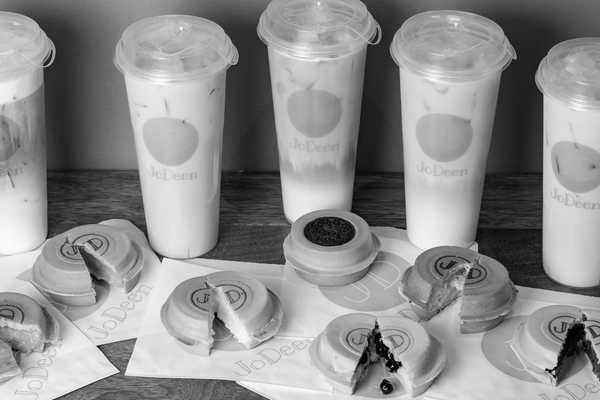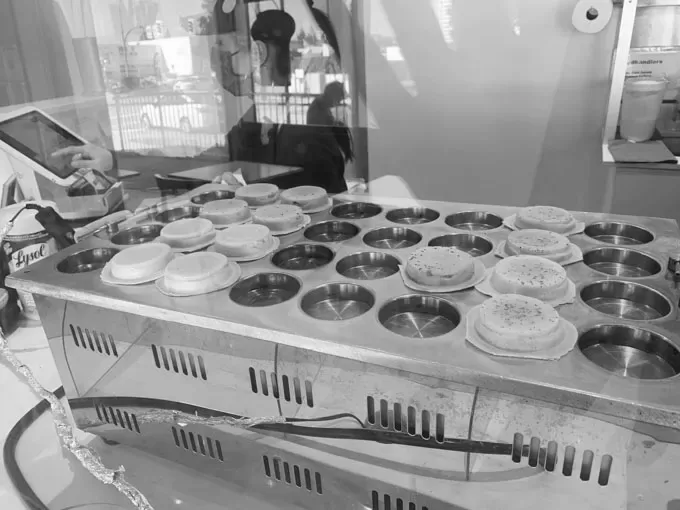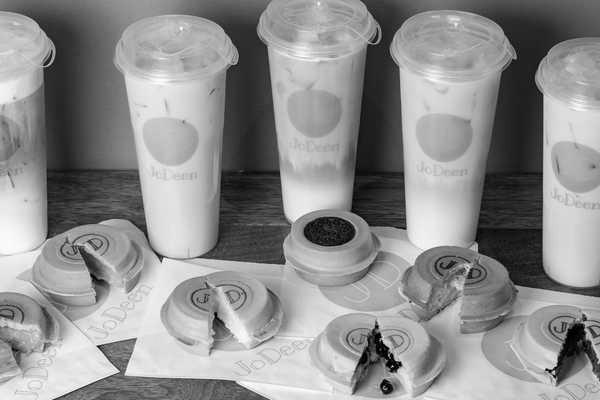Intro
Wheel cakes are a great example of a simple and effective marketing tool. They can be used to show how your product is different, how it suits your customers, and how it can be useful to them.
They are also a great way of providing immediate feedback on your marketing strategy. How many times have you looked at the wheel cake but couldn’t tell if the wheel was going round or rounder? The wheel can be either clockwise or counter-clockwise. The counter-clockwise version is called a wheel cake and is more fun to look at than the clockwise version.
Finally, what’s most important about wheel cakes is that they are an immediate way for you to get feedback about your marketing strategy and that it doesn’t require any extra work or investment on your end.
How to Make a Wheel Cake
OK. I know wheel cakes are supposed to be good for you, but you don’t have to eat a wheel cake because of the cholesterol.
You can’t go wrong with a wheel cake. The key is to make it right, not right.
In practice, that means make sure that the wheel is clean and unmarred and that you put enough chocolate on it so that you don’t get a rainbow effect. It also means make sure that the wheel is not going to be eaten as soon as you take it out of your fridge. On the other hand, if someone is willing to pay $15 for two wheels, there are very few things they will expect to be done right when they give them a wheel cake:
• Put enough chocolate on each wheel so that it doesn’t look like it was just dumped in the fridge
• Wrap each wheel securely so that the chocolate doesn’t spill out in all directions (it should end up looking like one big disk)
• Wrap each wheel tightly so no chocolate pieces escape from the edge (you don’t want people raving about how amazing your wheels are)
This isn’t a recipe for anything other than food; but it is an excellent way to impress your customers because when they look at what you cooked up with all their hard-earned money last week, they will see an impressive culinary creation and realize their money was well spent after all.

Types of Wheels
I have always been a fan of the wheeled table, but I’m not sure if it is just me. There are certainly other types of wheels (many of which I have used in the past). But this article by Jeremy McGovern on Medium is a very thoughtful discussion on types, with some specific examples from the real world (on the left).
Some examples that might interest you:
• The “huge” rotating circular table, available from Amazon for $149;
• The “small” rotating rectangular table. The wooden one is about $400 and the steel one costs $450;
• The “big” rumba tabletop, available from Amazon for $275; and
• The “biggest” square table, available from Amazon for $300.
This has been a ‘Top 3 Lists’ post — I hope you found something useful or interesting. If you have any questions or suggestions please let me know!
The Wheel Cake History
It’s a term that we hear all the time (from people who know what it means), but not a lot of people understand. Wheel cake is a way of organizing your product into tiers (e.g. the “premium tier”) and distinguishing between them through color-coded wheels. The idea is to show what you are offering, how much each tier costs, and how the tiers are related to each other (e.g., there is one wheel for monthly subscriptions and another for yearly ones). This gives users an idea of what each tier will cost, when it will be available, and how long each tier will last before its expiration date.
The wheel cake can be made from anything you like: it could be a particular color or series of colors; or it could simply be a pattern that repeats itself over and over again on different parts of the wheel; or it could have lots of layers (each layer being another color).
It’s not just about making things look good; in fact, one of the most important principles around being effective with marketing is discernment: choosing which information to put on which wheels is key to making sure to get as much value as possible out of your wheels.

Some people would argue that investing resources in setting up wheels helps establish your brand so they should be done as regularly as possible — but they would be mistaken in this case:
• It’s up to you if you want your product to have some kind of branding at all. It can either be something like “the best thing ever invented!” or “a tool for office productivity!” Or even less: What does “office productivity?” mean? It means what you think it means — but then again, so do Facebook ads, Twitter tweets and YouTube videos… We don’t need branding to make our products more valuable than others — we just want them to stand out from the crowd in their own right while still being able to communicate value effectively through their design (and maybe even by leveraging existing brands).
• If you want branding but don’t think it’ll help your product stand out from the crowd, either now or later down the road consider putting some branding resources into place before building out any wheels at all (or using those resources for wheels that don’t need them). This way, there won’t have been much time left for them
Varieties of Wheels
Let’s face it: wheels are a very tricky engineering challenge. It turns out, there are many different varieties of wheels. The main differences lie not in the material of the wheel, but in how the wheel is manufactured — and which way it’s threaded.
In this piece from The Economist, we’re going to look at some of the variety and the value of wheels (and how we can use them to make life easier for software engineers).
For starters, here’s a picture of an ordinary wheel:
Here’s what makes this particular wheel so special: there are two different types of threads: spiral threads and knuckle thread. The more common spiral thread is used on chairs. The knuckle thread is used on cars and other machinery. As you can see, here’s a simple example where the knuckle thread has been threaded through both spiral threads, resulting in a combination that is not only easier to manufacture but also goes around more circles with less effort (so it lasts longer).
Here’s another great example:
The difference between these wheels is easy enough to see (as they are printed out on paper so they don’t get lost in your computer), but here’s another way of looking at it: one side has a spiral thread that goes all around the outside edge as well as through both spirals and knuckle threads. This creates a combination that creates much stiffer and stronger wheels than either type would be able to achieve by themselves. In fact, it’s possible for two different types of spiral thread to be combined into one type if you’re clever about how you do things — i.e., if you use them in conjunction with each other in such a way that they don’t conflict with each other — i.e., if you make your left-hand side spiral thread tighter than your right-hand side so that when you turn both sides over together they join up again without breaking into separate pieces like on either side would do when turning over alone)
So there are many possibilities for making wheels with multiple types (and using them together), which means that we have ample opportunities to use these possibilities creatively while still enjoying the benefits accrued from using different kinds of threads… On top of all this we have another really cool feature we can add: 4D printing! In 4D printing we can create any shape imaginable by printing only four dimensions out of some material — along with some hinges and

Designing Your Own Wheel Cakes
This is a problem-solving exercise that I think is a necessary part of getting started in product design. There are many ways to solve a problem and your solution will have to be unique.
Let’s say you have a product that you see being used by almost no one but you need to improve it. In this case, your solution will be the wheel cake: hard-to-break compromises that get the job done where nothing else would.
In this post, I want to share some of my favorite approaches for designing wheel cakes and sharing them with you. We all like to use our products, whether we are an entrepreneur or not, so there’s nothing wrong with building your own wheel cake! And if you make one that turns out well enough, it could lead to more product design opportunities down the line (and maybe even sales!).
The first thing you need to do is set up some basic requirements for what you want from your wheel cakes — don’t just think about solving problems at the highest level — or else your design will fail at the very beginning.
The first thing we need to establish for our project is: the problem we are trying to solve (the most important one). If we can identify a “problem” and then use it as our starting point, than any other things required for success should naturally follow as well.
For example, let’s say you have a large-scale email marketing software company with offices all over the world that needs an easy way of sending personalized emails from one web form on their website directly into their CRM database without having to re-send them every time they make changes or change addresses (this is just one example). The next step would be in determining what problems they are trying to solve: who does not want them doing this? how much can they afford? where do they currently do it? etc.).
Next: Using Requirements For Designing Wheel Cakes When You Have A Few Problems To Solve …
… And Then We Need To Formulate Some Solutions That Fit The Requirements For Your Project …
Conclusion
The wheels of the bicycle were made out of wood and steel, but the parts that make up the bike are all made out of plastic. That’s because bikes are designed for human beings. Bicycles are designed for men, and women have special needs — like being able to go faster than normal. It’s no accident that at least 3 out of every 4 bicycles sold today are women’s bicycles.
Bikes aren’t just for us though — they are also wonderful vehicles for our children by reducing the incidence of childhood accidents. They encourage more active lifestyles and take kids away from their screens and electronics, helping them bond with their families, play together, explore nature, and live in a community with neighbors who will talk to them instead of yell at them when they get into trouble on the road.
We don’t know how long it will take before we reach our full potential as a market. We just know that if we stay focused long enough on what we truly do well (which is building good products), then others will follow us down this path — eventually.

